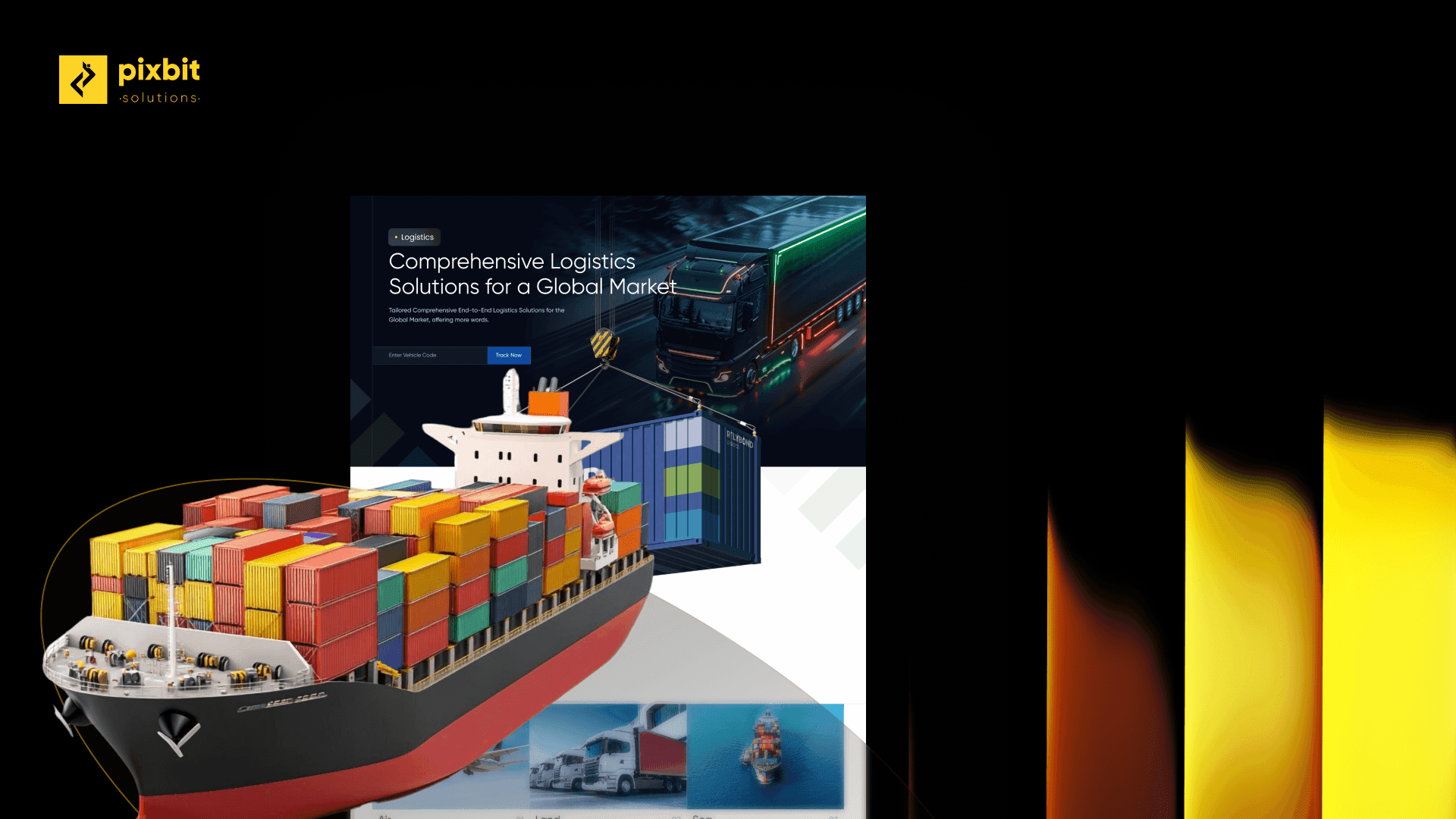The Web Development Roadmap Every Business Owner Should Have
Nabeel Al Nassir
September 24, 2025
10 Min read

Building a new website in Dubai is one of the most exciting steps for a growing business. It’s where your brand comes alive, your services or products are showcased, and customers get to know who you are. But along with that excitement, it’s natural to feel a bit overwhelmed. Where do you start? How much should you invest? What if you end up with a site that doesn’t reflect your vision or worse, costs more than expected?
Many business owners approach a web design company Dubai for web development without a clear plan. That’s when confusion sets in, goals are unclear, communication breaks down, and budgets spiral out of control. You don’t need to be a tech expert to avoid these problems. What you need is a structured roadmap, a way to stay in control from planning to launch and beyond.
Because with the right plan in place, you can confidently build a website that works for you.
Why You Need a Roadmap Before You Start
Without a roadmap, web development projects easily go off track. It’s tempting to jump right into design or pick features that look impressive, but without a clear direction, that excitement quickly turns into frustration.
Here’s what typically happens when there’s no structured approach:
- Projects run over budget because additional features or fixes keep getting added.
- Scope creep sets in, with developers making changes that weren’t originally discussed.
- Endless revisions drain time and resources as priorities shift without alignment.
- Goals are misaligned, resulting in a site that fails to reflect your brand or effectively serve your customers.
Web development in Dubai takes off by providing you with a roadmap that helps in avoiding these issues by offering clarity at every stage. It allows you to set clear milestones, manage expectations, and communicate effectively with your team. More importantly, distinguish between what's essential and what’s optional.
By defining your goals early, prioritizing features, and choosing the right team, you take control of the process instead of letting it control you. Planning upfront saves money, reduces stress, and ensures that the final website is built with purpose, not guesswork.
Common Challenges Business Owners Face When Starting a Web Project
If you’re about to start a web development project in UAE, you’re not alone in facing uncertainty. Many business owners run into the same problems not because they lack ideas, but because they’re not always prepared for how complex the process can be.
Here are some of the most common challenges:
- Unclear objectives: You might know you want a website, but not why. Without specific goals, developers may build features that don’t support your business needs, resulting in wasted time and money.
- Unrealistic timelines: You want the website up as soon as possible, but good development takes planning and testing. Rushing through phases often leads to low-quality work or missed deadlines.
- Poor communication: Without structured check-ins and clear responsibilities, misunderstandings pile up. What you asked for and what’s delivered don’t match, and it takes time to fix the issues.
- Budget surprises: You might plan for basic design and development, only to find that extra plugins, integrations, or security patches add unexpected costs.
- Ignoring post-launch needs: A website isn’t “finished” when it goes live. Updates, backups, and analytics need to be handled regularly, or problems accumulate quickly.
Understanding these challenges before you start helps you with your website development in Dubai that serves your goals while keeping stress and costs in check.
The Web Development Roadmap
- Clarify Your Why Before You Build
Before you even choose a web development company in Dubai or start designing pages, it’s important to step back and define the purpose of your website. Ask yourself:
- Is it for lead generation, brand visibility, or e-commerce?
- What problem does it solve for your customers?
- Who are you competing with, and how will your site stand out?
Many businesses skip this step and go straight into design, assuming they’ll “figure it out later.” That’s a common pitfall. Without a clear purpose, the project can lose focus and drift toward features you don’t actually need.
A simple but powerful step is to create a goal sheet that includes:
- Your top priorities
- Key performance indicators (KPIs) you want to track
- Features that are essential vs optional
This document becomes the foundation of your project, ensuring every decision supports your business objectives.
- Scope Planning: What’s Realistic vs What’s Aspirational
Once your goals are clear, it’s time to define the scope. Separate features into:
- Must-have: These are critical to launch, like core services, contact forms, or product listings.
- Future enhancements: These are features you can add after gathering user feedback, such as advanced integrations or automation tools.
A phased development approach helps you launch faster and test what works:
- MVP (Minimum Viable Product) to test quickly and gain feedback
- Iterative improvements to scale features as you learn more
For example, you might start with service pages and lead forms, and later add payment processing or customer portals based on demand.
This approach avoids building everything up front, which often leads to delays and higher costs.
- Choosing the Right Team Finding the right website development company isn’t just about hiring the cheapest option or the one with the flashiest portfolio. Look for developers who communicate clearly, ask questions, and guide you through decisions.
Key traits to look for:
- Quick, transparent communication
- Ability to explain technical topics in plain language
- A track record of delivering projects similar to yours
Start by setting expectations early:
- Create a shared project brief
- Define roles, responsibilities, and decision-makers
- Agree on who signs off on milestones and deliverables
Be cautious if you notice vague timelines, unclear pricing, or one-size-fits-all solutions. A good web design company Dubai helps you plan, rather than simply executing requests without understanding your goals.
- Designing for Experience, Not Just Looks Design isn’t about colors and fonts, it’s about how customers interact with your site. It’s important to consider these user flow matters before moving on to your next phase of development:
- Map how customers will move through the site
- Ensure each page guides them toward taking action
- Avoid clutter that overwhelms or distracts
Your branding should be reflected in visuals, copy, and tone, helping users feel connected to your business. Accessibility is also important; your site should be usable by everyone, including those with disabilities.
A common mistake is focusing on aesthetics while ignoring usability. That’s how sites end up with high bounce rates and low conversion.
- Budgeting with Transparency Planning your budget up front helps you avoid surprises. Break the cost into:
- Planning and design
- Development and testing
- Launch and maintenance
Also anticipate hidden costs such as:
- Premium plugins
- Hosting or subscription fees
- Post-launch fixes or security patches
Always add a buffer of 10–20% to cover unforeseen issues. Avoid simply choosing the lowest bid for web development in Dubai, as it often leads to hidden problems down the road. Discuss trade-offs between cost, speed, and long-term performance openly with your team.
- Development Workflow A structured workflow ensures that tasks are completed on time without unnecessary back-and-forth.
How to structure the workflow:
- Regular check-ins weekly or biweekly
- Task boards or progress reports
- Clear assignment of responsibilities
Feedback loops are crucial. Decide early on:
- Who reviews work at each stage?
- How will feedback be consolidated from multiple stakeholders?
Encourage prototypes or wireframes before development begins. Fixing issues at the wireframe stage is far easier and cheaper than after full development.
- Testing, Compliance, and Security Checklist Testing should not be an afterthought. Before launch, check:
- User experience is navigation smooth and intuitive?
- Does the site load quickly across devices?
- Security, SSL certificates, data encryption, and secure gateways
Compliance is equally critical:
- Privacy policies and data protection regulations that are applicable under UAE laws
- Accessibility standards to ensure usability for all users
Skipping these steps can not only harm your brand’s reputation but also expose you to legal risks.
- Launch Strategy and Post-Launch Roadmap Launching is the start, not the finish line. Consider a soft launch to catch last-minute issues without a full rollout. Use a checklist before going live:
- Review all content
- Optimize SEO settings
- Set up analytics tracking
Post-launch maintenance is equally important:
- Schedule regular backups
- Plan for content updates
- Monitor performance and security
Your website should be treated as a living asset that grows with your business, rather than a static one-time project.
- Scaling and Evolving As your business grows, your website should evolve with it. Scaling doesn’t mean starting from scratch; it’s about enhancing what you already have.
- Collect data from user interactions to understand what’s working and what isn’t
- Integrate tools like customer relationship management (CRM) platforms or marketing automation to streamline operations
- Add features based on customer feedback, such as improved search functions or personalized content
- Plan for future updates so your site stays relevant and efficient
A scalable website developed by a web development company Dubai grows alongside your business without creating chaos or requiring a full overhaul every few years.
Tools, Templates, and Frameworks That Simplify the Process
There’s no need to reinvent the wheel when tools and templates can guide you throughout the planning and execution of website development in Dubai. Project management platforms like Trello or Jira help keep tasks organized and deadlines clear. Collaboration tools like Google Docs and Sheets allow teams to share notes, priorities, and progress in real time. Wireframing tools such as Figma help visualize designs before developers write any code.
But remember: tools are only helpful when paired with clarity and communication. A roadmap helps you ask the right questions, prioritize work, and maintain alignment. Without a plan, even the best tools can’t prevent confusion or missteps.
Conclusion
Planning a web development project may seem overwhelming at first, but it doesn’t have to be. By defining your purpose, setting realistic expectations, and staying engaged throughout the process, you can avoid common pitfalls and ensure your website supports your business goals. You don’t need to be a technical expert to make informed decisions; you just need a clear roadmap and the right support.
At Pixbit Solutions, the leading website development company in Dubai and the UAE, we understand the challenges that business owners face when building a website. That’s why we partner with you at every stage, from clarifying your goals and planning the project to choosing the right tools and ensuring smooth execution. Our approach is built on transparent communication, tailored strategies, and expert guidance designed to simplify the process and deliver results that matter.
A website is more than a digital presence, it’s a tool that grows with your business. Let’s create one that’s not only visually appealing but also functional, user-friendly, and scalable for future success.

Nabeel Al Nassir
Digital Marketer
Share on
Have an idea that needs to go mobile? Launch it with us!
Have an idea that needs to go mobile? Launch it with us!
Let's Talk
You May Also Like
Explore insightful articles and tips from our experts on the latest trends in web development and marketing.
Have an idea ?
Let's make it happen
Tell us your business aspirations, and let's craft a custom solution that drives business growth, ensuring satisfaction and exceeding your goals with precision.
Let's Talk


